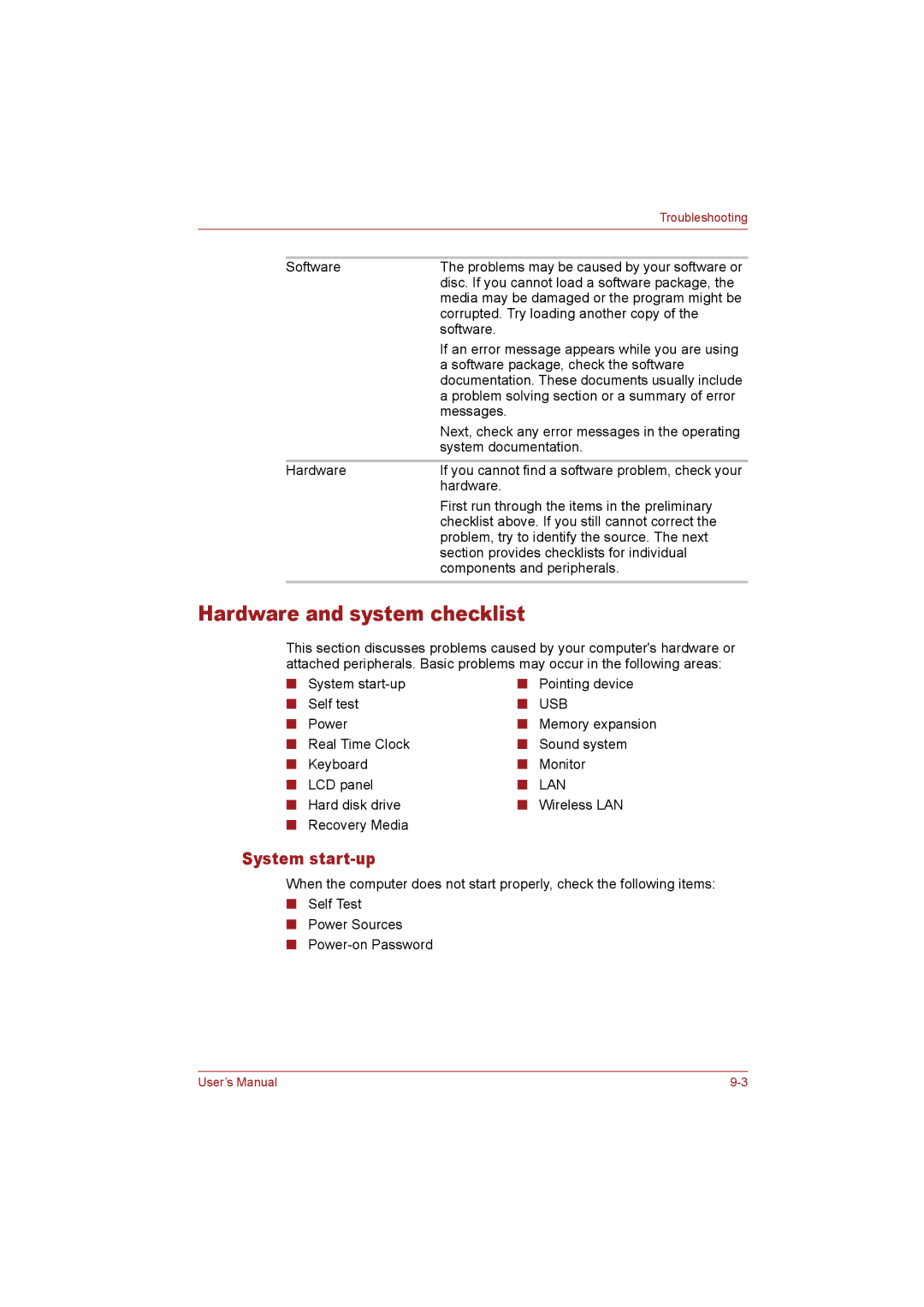|
| Troubleshooting |
|
|
|
|
|
|
| Software | The problems may be caused by your software or |
|
| disc. If you cannot load a software package, the |
|
| media may be damaged or the program might be |
|
| corrupted. Try loading another copy of the |
|
| software. |
|
| If an error message appears while you are using |
|
| a software package, check the software |
|
| documentation. These documents usually include |
|
| a problem solving section or a summary of error |
|
| messages. |
|
| Next, check any error messages in the operating |
|
| system documentation. |
| Hardware | If you cannot find a software problem, check your |
|
| hardware. |
|
| First run through the items in the preliminary |
|
| checklist above. If you still cannot correct the |
|
| problem, try to identify the source. The next |
|
| section provides checklists for individual |
|
| components and peripherals. |
Hardware and system checklist
This section discusses problems caused by your computer's hardware or attached peripherals. Basic problems may occur in the following areas:
■ System | ■ Pointing device |
■ Self test | ■ USB |
■ Power | ■ Memory expansion |
■ Real Time Clock | ■ Sound system |
■ Keyboard | ■ Monitor |
■ LCD panel | ■ LAN |
■ Hard disk drive | ■ Wireless LAN |
■ Recovery Media |
|
System start-up
When the computer does not start properly, check the following items:
■Self Test
■Power Sources
■
User’s Manual |
